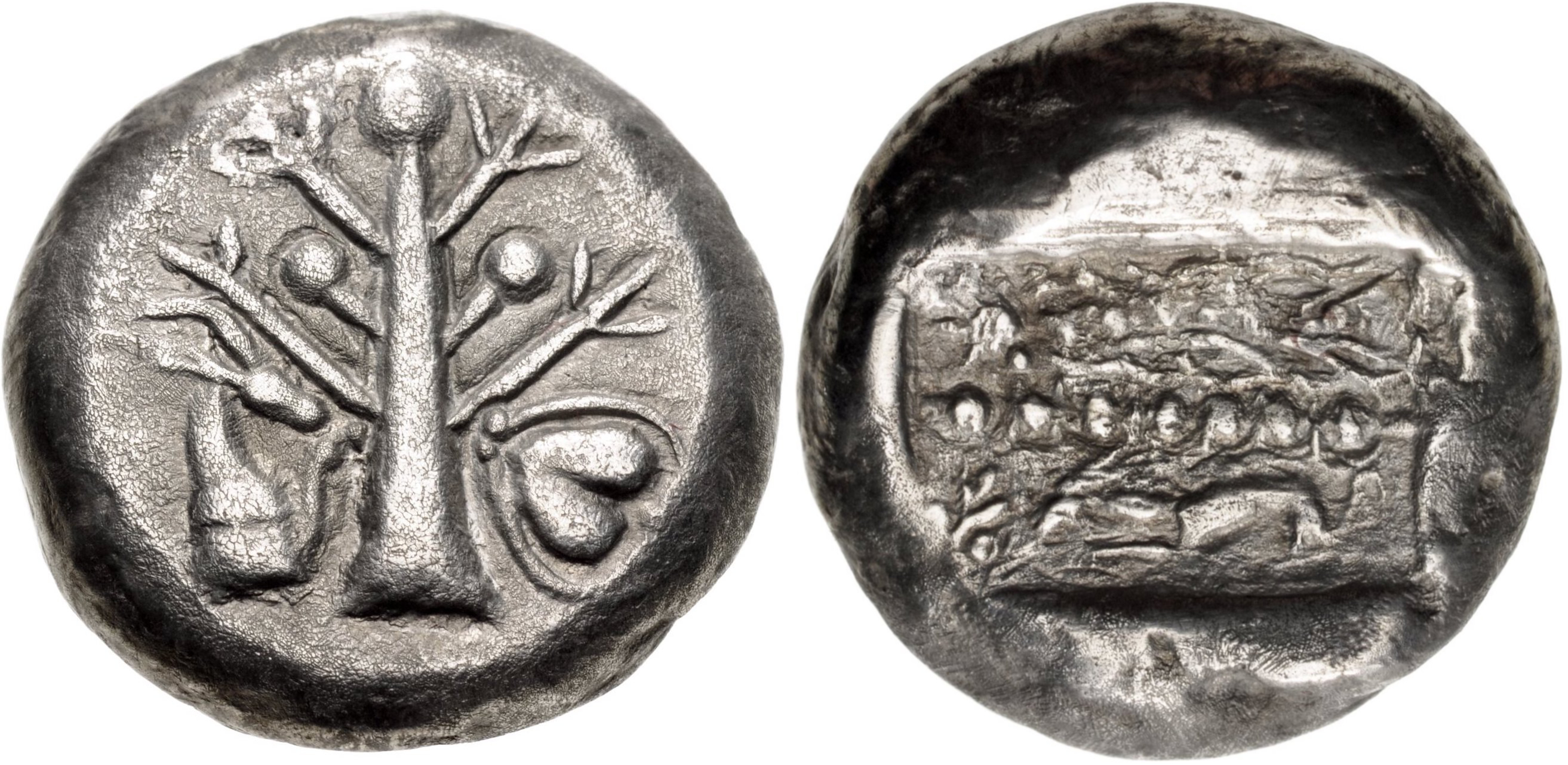Lot 79

KYRENAICA. Kyrene. Circa 500-480 BC. Tetradrachm (Silver, 21 mm, 15.93 g, 6 h). Silphium plant with three blossoms and four branches; below, on the left, forepart of a gazelle to right, seemingly grazing on the lower left branch of the silphium; below, on the right, a silphion fruit. Rev. Rectangular incuse punch, divided lengthwise into two rectangles by a band composed of seven large beads; in the lower rectangle, a gazelle crouching to left, his back towards the beaded band, grazing on a silphium plant in the far left corner; in the upper rectangle, an absolutely unclear depiction of either an animal and a silphium plant or, perhaps, just a very large silphium (the interpretation is made extremely difficult both by die rust and and crudeness of the die engraving). For the obverse, cf. BMC p. 123, 2bis and Rosen 759; for the reverse, see BMC p. xix, 1c and pl. I, 4 = Traité II, 1, 2000 and pl. LXIII, 19. An extremely rare, if not unique, archaic issue, with a lovely obverse and a fascinating reverse. Good very fine.
What is happening on the reverse of this coin? The obverse is clear: we have a desert gazelle grazing on a silphium plant, with a plump fruit on the other side, but the reverse is composed of two "inhabited" rectangles: the lower (or at least the one we are terming the lower) contains a horned quadruped, which is almost certainly a gazelle, seemingly kneeling (how else could he be shown in this space?) and grazing on a silphium plant: he is oriented so that his back is toward the middle of the coin. The upper rectangle presents a real problem because, quite simply, the rudeness of the die engraving, as well as its die rust, makes it very difficult for the modern viewer to understand what is going on! Is it oriented in the same direction as the depiction in the lower incuse, or is it symmetrical? For example, if it is an animal are its feet on the beaded band, or is its back toward the band - as with the gazelle below? And is it an animal or could it be a vegetal ornament of some kind - perhaps an elaborate silphium? A very close parallel to this coin is the piece in Paris, which has a very similar reverse, though a completely different obverse (D603 and https://gallica.bnf.fr/ark:/12148/btv1b8483027v/f1.double). Interestingly enough, none of these reverses are properly described, probably because their types are so obscure.
